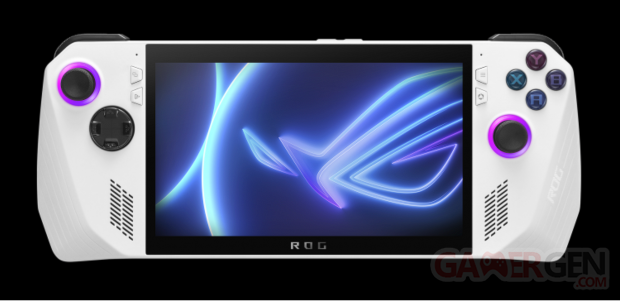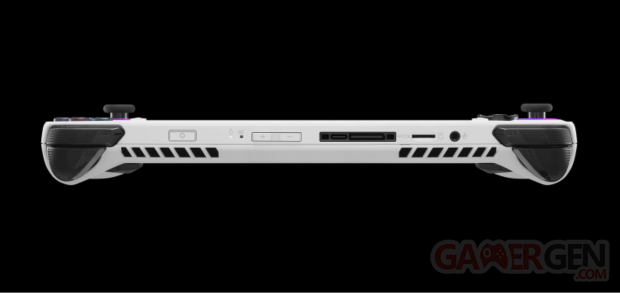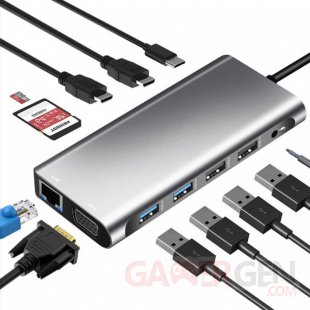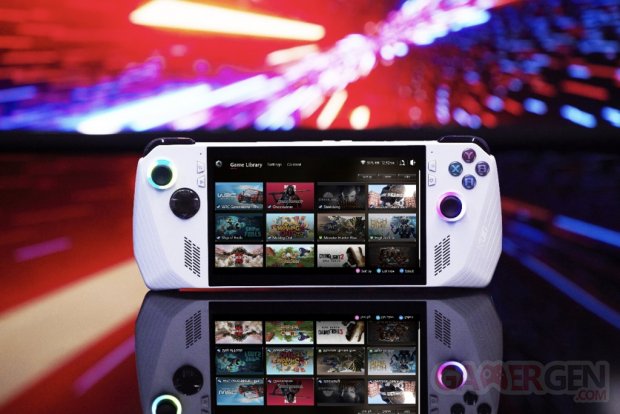The ROG Ally is almost a month old, the time needed to collect most of the complaints and fears of users. ASUS is particularly attentive and lets us know, point by point:
There Update 319 did damage and for good reason, it had weighed down the performance of the ROG Ally (about 20%). Fortunately, ASUS offered a fixed fast enough. Here’s the brand’s release (via Whitson Gordon, Community Manager of the brand, on Discord):
After a full update, including the latest BIOS 319 and the latest AMD graphics drivers 31.0.14058.4001 (downloadable from MyASUS), we see performance comparable to the launch BIOS version 317. You can check out the results of our tests below and validate them on your own system with the same games and settings.
Benchmark Cyberpunk 2077 (1080p Medium, FSR Auto):
Bios 317: 38.44 fps
Bios 319: 39.95fps
These results were obtained with the Ally in Turbo mode, unplugged, with VRAM set to the default of 4G. We’ll be adding more validated game tests to this list soon, so you have more examples to replicate on your own device.

Sticks that squeak, squeak, make a noise unusual to say the least… Don’t look, your ROG Ally is still under warranty a new exchange is strongly recommended. In addition, there is another equally annoying problem: that of dead zones. They correspond to regions of the stick that no longer respond to player actions. This one realizes that by pushing the joystick in a particular direction (there may be several), the game does not react or belatedly. The overlay Armory Crate has options provided to correct the shooting (by playing in particular on the sensitivity of the sticks). ASUS is well aware of this issue and seems to be working on improving said options:
We are continuing to investigate reports of joystick dead zones. Many variables contribute to the dead zone you experience, such as the game you’re playing, the launcher and its control layer, and of course Armory Crate SE. Each of these factors can overlap, and as we know this is a major concern for many of you, we want to make sure we approach it with the rigor it deserves.

Hardware, software or overheating problem, ASUS has not yet decided, but still Using micro-SD cards on the ROG Ally isn’t smooth sailing. These are especially the cards of the famous brand Sandisk (also the most used) which seem to be the most impacted. You will see it yourself, the manufacturer speaks well of micro-SD card readers in its press release and not of the cards themselves :
Our team is still hard at work testing for issues with the microSD card reader. First, if your Ally’s microSD card reader fails to read microSD cards, or if you suspect there is a malfunction with the reader, please request an RMA for your device by emailing mail to [email protected] directly.
We take user reports very seriously, but we would like to collect more data, because at the moment all of our test devices are working within specifications. If you are requesting an RMA for your device, be as specific as possible about the conditions that led to the problem, including the operating mode you were in, the model of microSD card used, and what the microSD card was doing at the time. -there. Please also attach the SD card in question to your RMA. We will use this data in further testing to try to determine if there is a problem and what it is.
As a first precaution, we will be releasing an update that will increase the fan speed of the device, as proper cooling will alleviate component stress that can sometimes cause issues. In the meantime, you can create your own manual ventilation curve in Armory Crate SE.
First of all, test your new card using software (as SD Memory Card Formatter) on two different machines: your ROG Ally and another PC. If the result is not the same between the two PCs, you have a faulty drive on the side of the machine that is detecting errors. If the result fails on both, then test the card on a third machine and if nothing changes, then the micro-SD card is at fault.
This will allow you to know, in the event of a problem, who is the real culprit! Of course, this verification can hardly be done afterwards, or at least after use, because the software must format the micro-SD card to carry out this verification, which remains quite tedious in use, all the more so with a intensive use of said card.

ASUS takes the above fears and damages seriously, and otherwise discloses other concerns : that of audio crackling on some machines, and that of docking stations (or docks) that do not provide full power (Turbo 30W) to the ROG Ally.
What we can advise you:
- Do all the updates (Windows Update, Armory Crate, MyAsus…) before playing (even if it’s very tempting);
- In order to increase the storage space, preferably replace the ROG Ally SSD with another SSD (having a greater capacity) rather than inserting a micro-SD card, which is already basically not ideally suited for fairly heavy read/write phases.
- When connecting your console to a USB Type-C hub, if the latter has a Jack port, choose the latteras it will likely conflict with that of your ROG Ally.
- No point in going back to lower updates (unless in immediate danger) if you notice a drop in performance. As ASUS demonstrated to us, immediately reassembled, immediately fixed. Its responsiveness is such that you will surely get tired for nothing.
You know everything.
